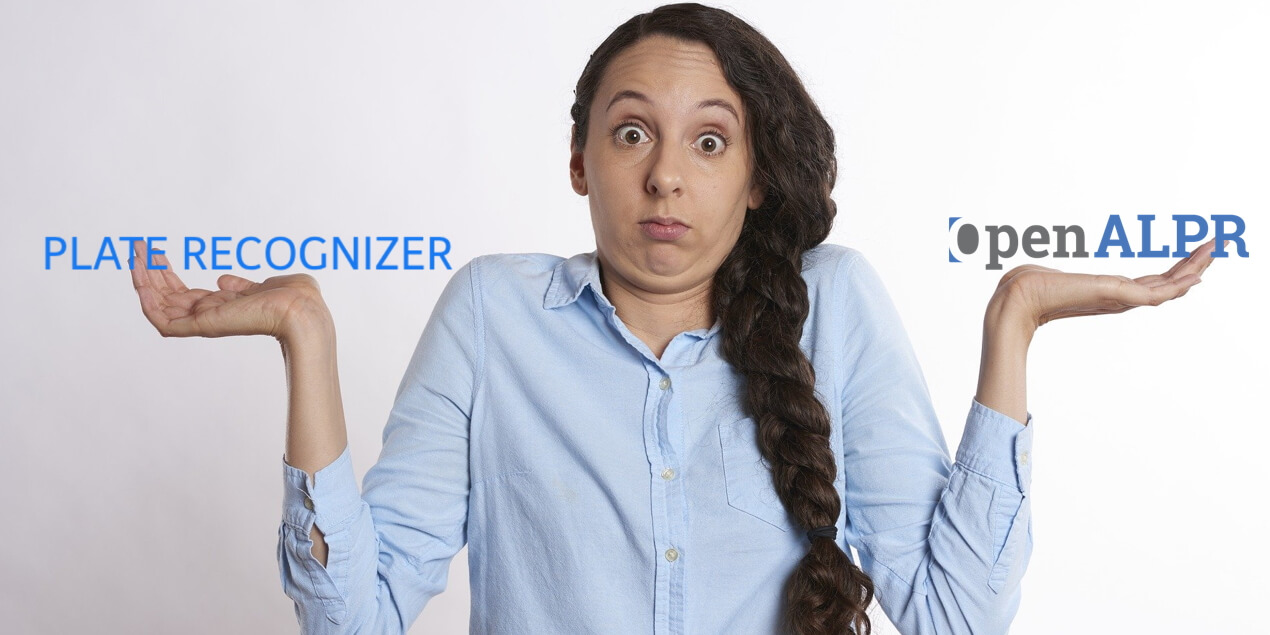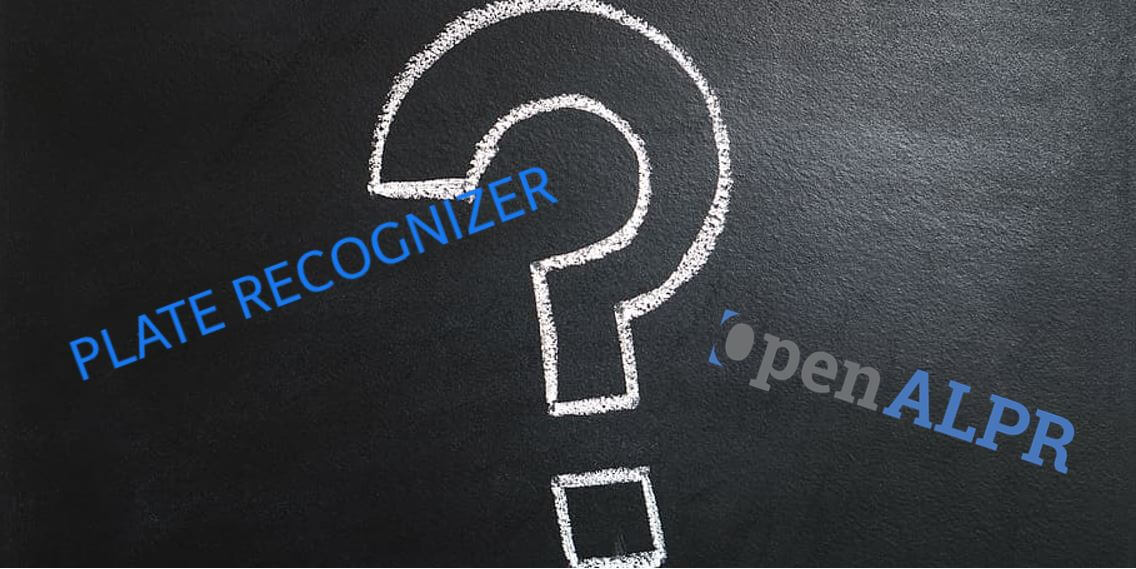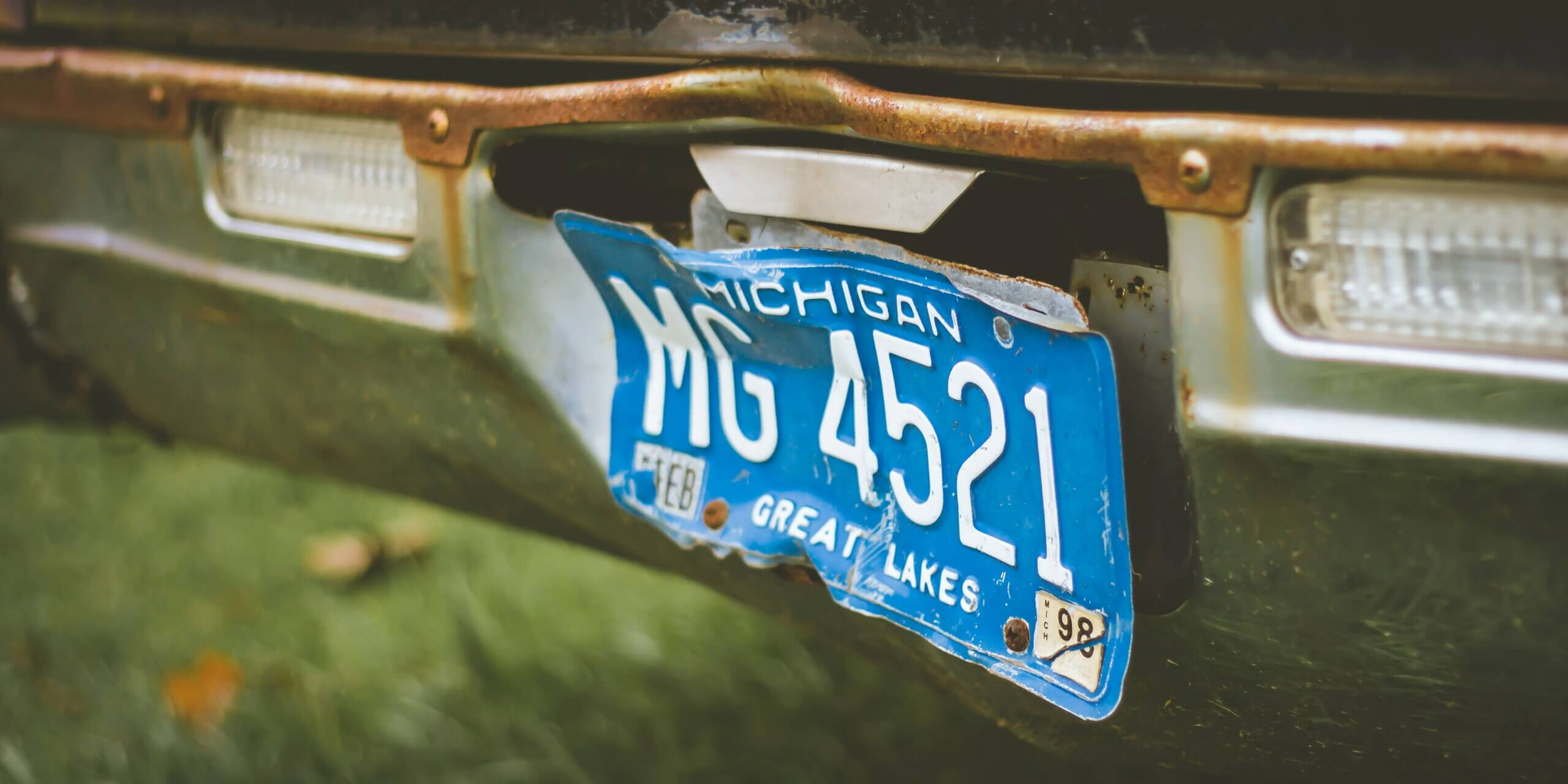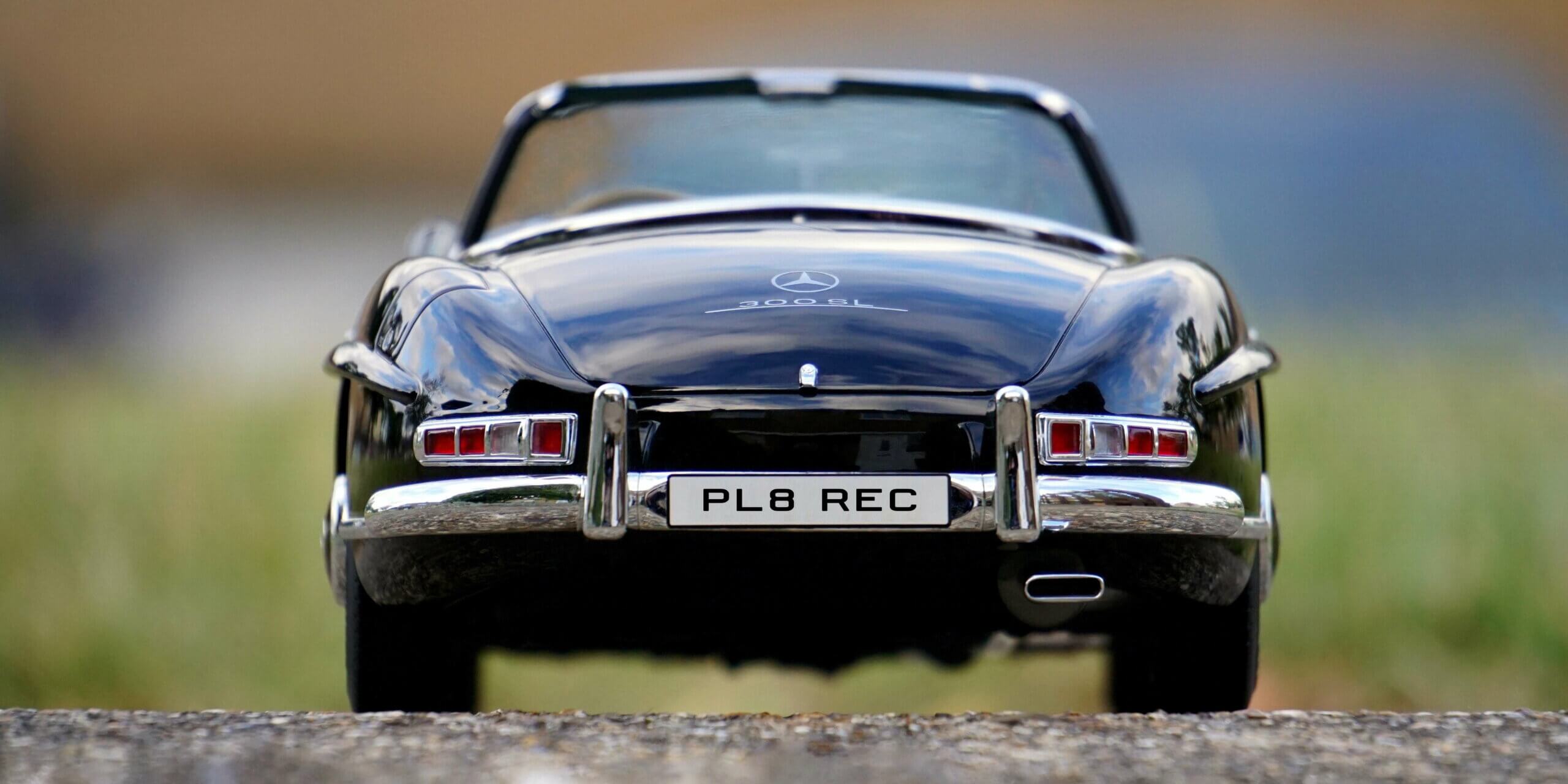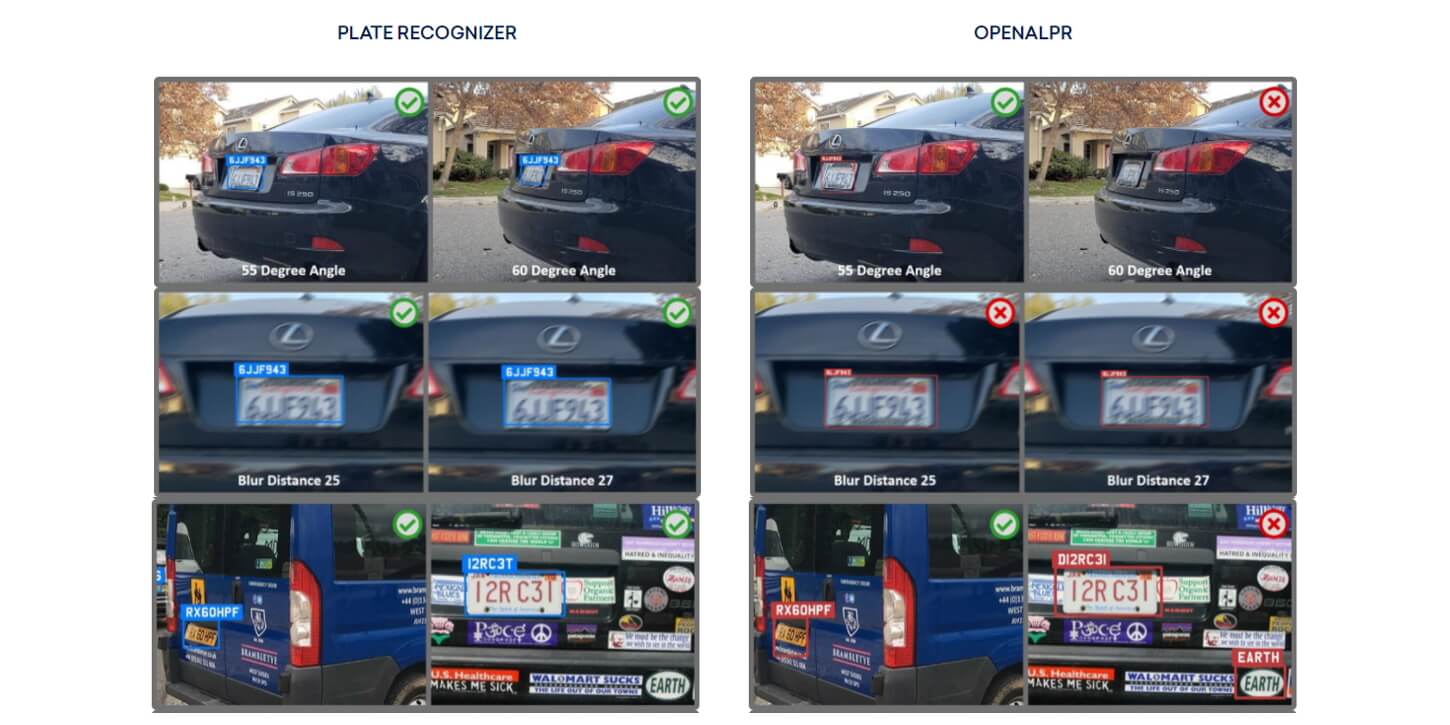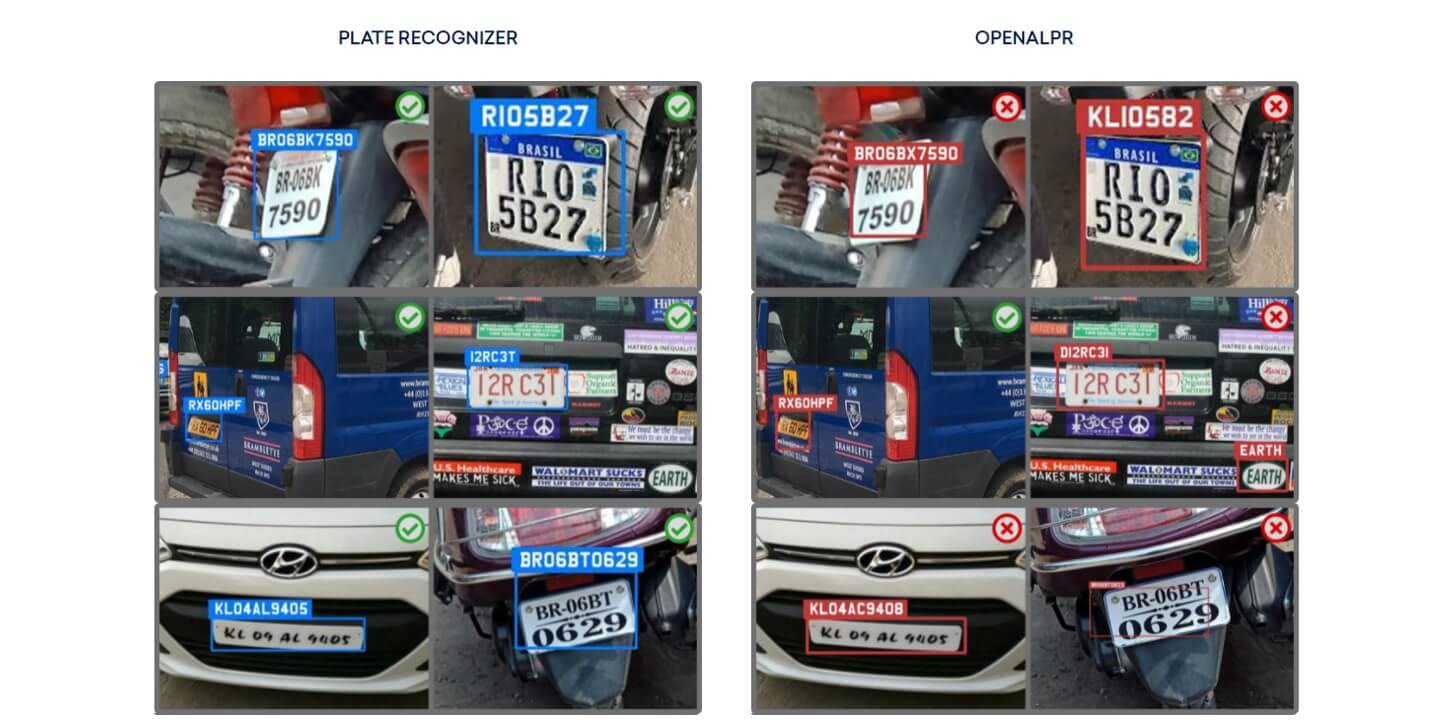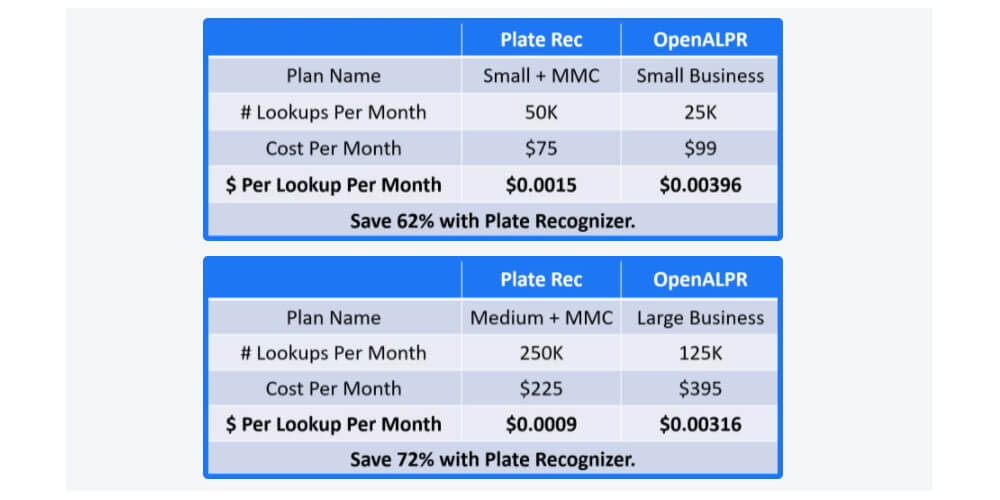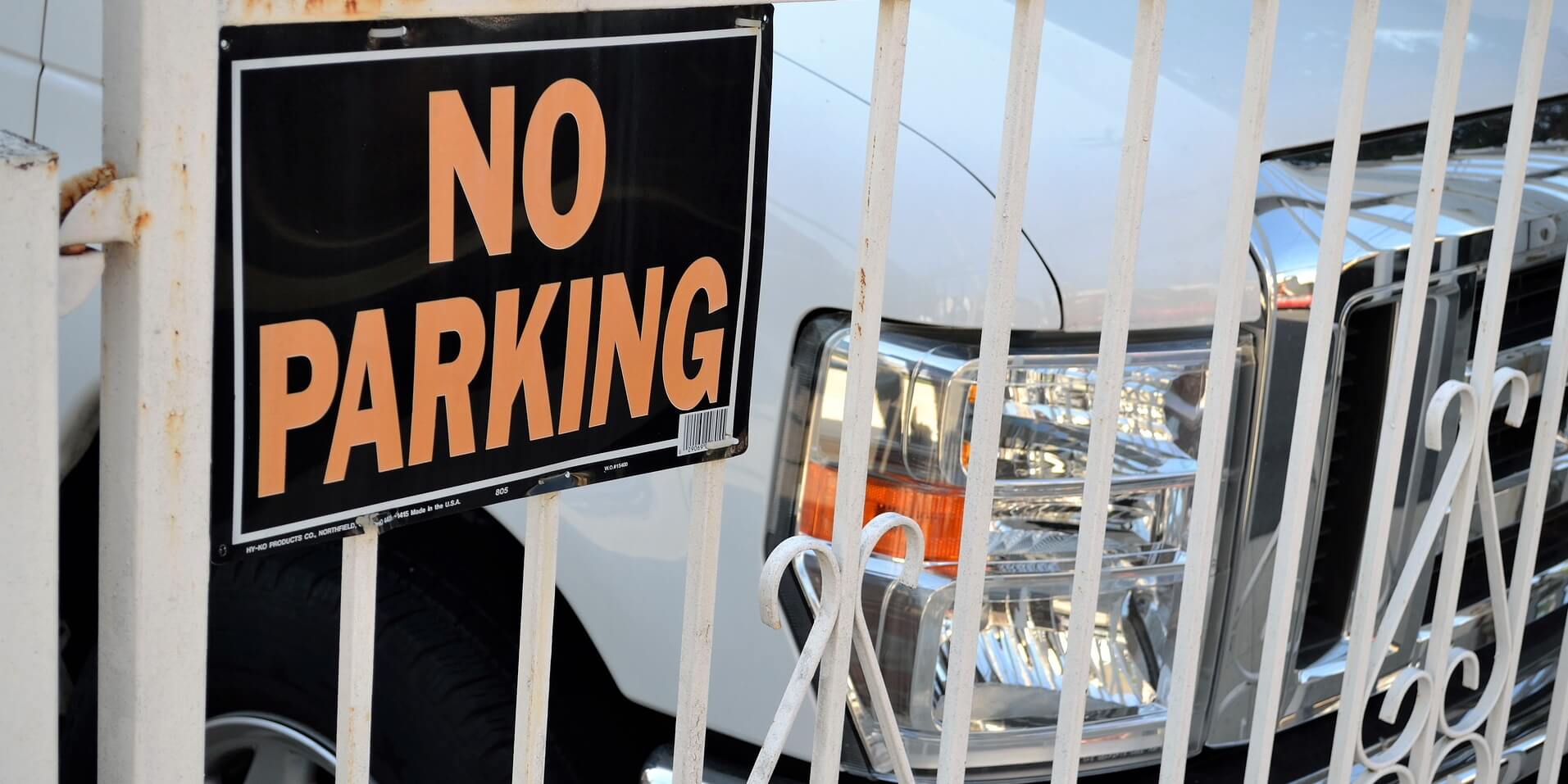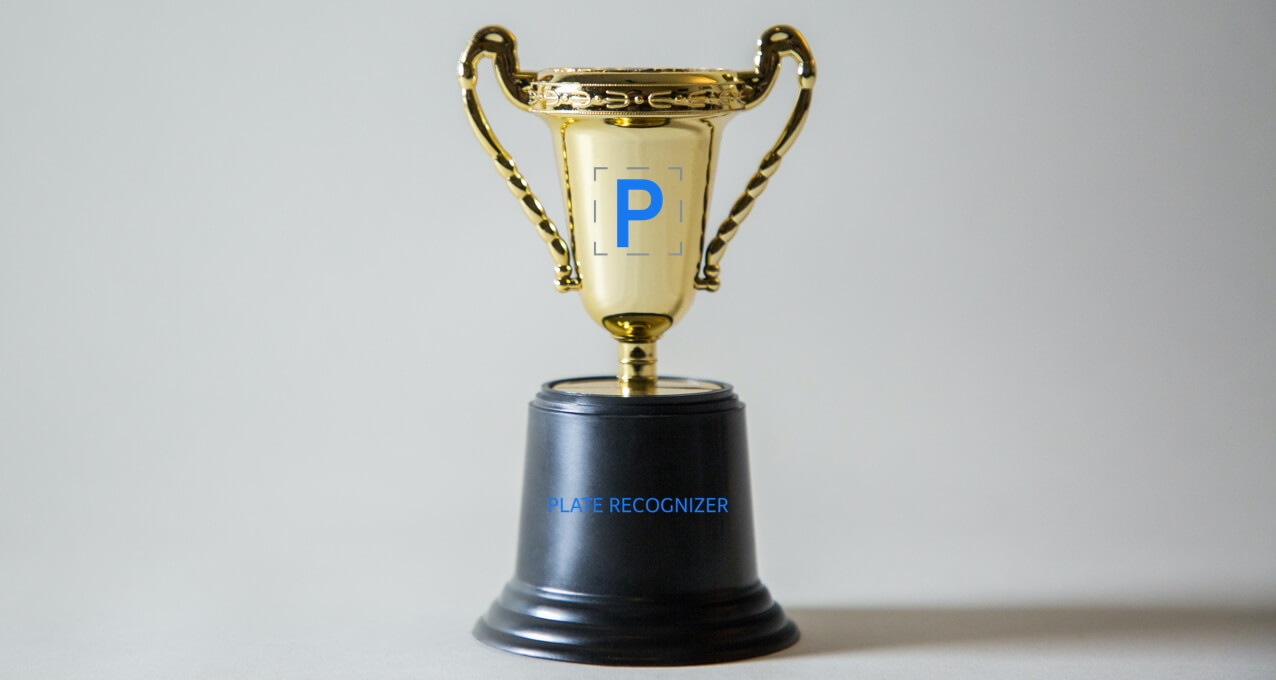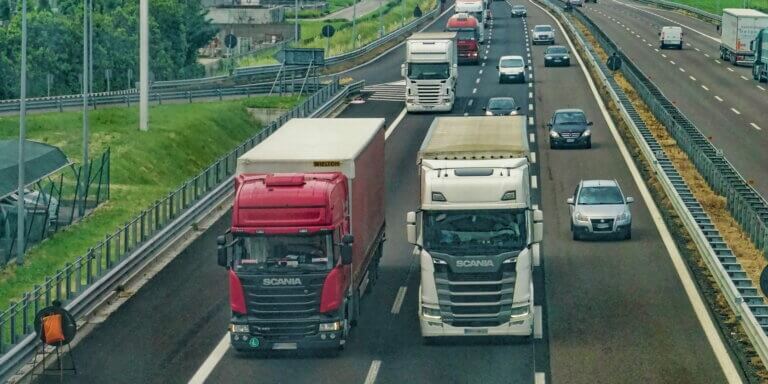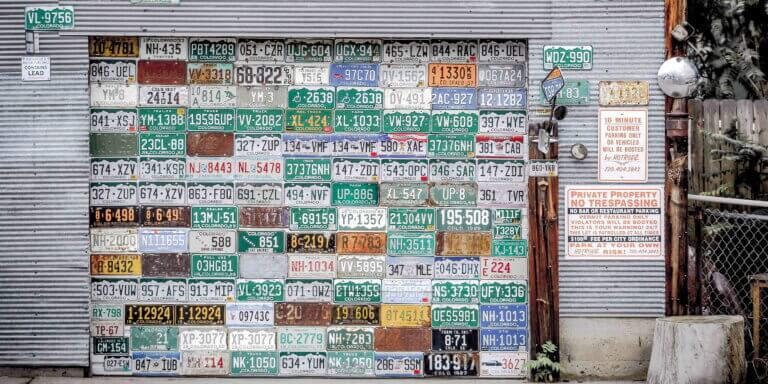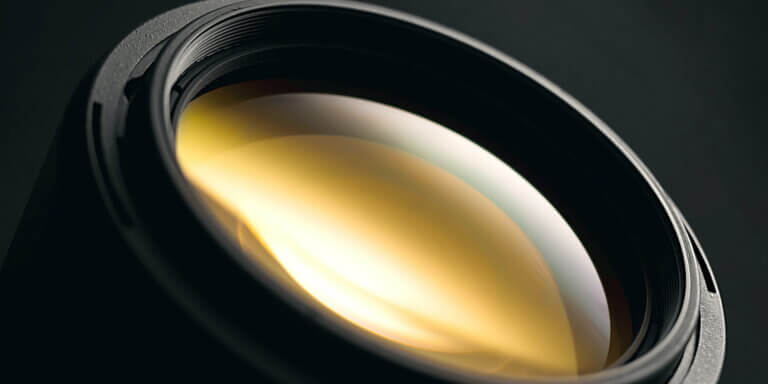Are there OpenALPR alternatives that will give you more bang for your buck? Our Open ALPR comparison delivers the facts on pricing, accuracy and customer support.
Is there much of a difference between OpenALPR and others such as Plate Recognizer? Source: Pixabay.
OpenALPR vs. the Competition – Are There Really Big Differences?
When what you want is accurate license plate data, does it really matter which solution you choose? How much difference can there actually be between providers when it comes to decoding plates?
With some products, you can pay extra for a brand or a logo, but not receive additional value. With others, the quality or capability of one product is noticeably better than that of another. We suspect if you’re interested in an OpenALPR comparison it’s because you’re wondering if it would benefit you to choose one type of license plate recognition product over another, or if they’re all the same. Let’s explore differences in cost, performance and support.
Let’s dive deep into OpenALPR alternatives. Source: Pixabay.
What All Good License Plate Readers Do
License plate recognition involves capturing an image or video and processing that through a series of algorithms. In the end, the user receives a record of the license plate characters and numbers, often along with additional information about the vehicle.
It sounds simple, but it actually involves hundreds of thousands of lines of code, because there are so many complexities and variations. For a license plate recognition system to be successful, its algorithms must do the following:
- Identify License Plate – ALPR software must be trained to know where on a vehicle to look to find a license plate and how to differentiate that from mirrors, bumper stickers, vehicle signage and so on.
- Adjust for Size, Orientation – A plate image from a vehicle in the distance will appear smaller than one that passed by closer to the camera. Plates captured at an angle appear to have a different shape. License plate readers must adjust to provide accurate data.
- Identify, Segment Characters – Once software “finds” the license plate, it must differentiate important data from backgrounds and special interest plates. Then, it must segment those colors and translate them into an alphanumeric text entry.
- Identify Make Model Color – Not all customers need this feature, but certainly a good ALPR engine should be able to do this accurately based on the image or camera feed.
Good LPR needs to accurately read license plates. Source: Unsplash.
Accurately completing those steps involves overcoming a huge array of challenges. For example, there’s a big difference between where one might expect to find a license plate on a motorcycle compared to on a bus. It’s much harder to obtain accurate data through driving rain than on a sunny day. There are also a dizzying number of differences between license plates from Hawaii and Texas, or say Germany and Thailand.
So while all ALPR providers advertise that they give you license plate data, you can see how it’s possible some solutions might work better than others. Bad data is worthless, and in some situations, it can actually cost you. So lets examine two of the top ALPR choices, OpenALPR and Plate Recognizer side by side.
Machine-learning software has really upped the game in ALPR accuracy. Source: Pixabay.
What is OpenALPR?
Toward the end of 2015, OpenALPR’s Matt Hill and his co-founder created an automatic license plate recognition library written in C++ and gave it away for free – for a time. From the beginning, their open source project was a smart way to draw attention to their cloud-based paid services. What started off as a free download went the way of many other ideas, and it too eventually became productized.
Hill acted as Founder and CTO of OpenALPR Technology, Inc, a company that was acquired by REKOR Recognition Systems in 2019. REKOR’s global headquarters is in Columbia, Maryland, and they provide around 65 countries with solutions primarily for surveillance, paid parking management, traffic management and toll collection.
OpenALPR website. Source: OpenALPR, Sept 2021.
Plate Recognizer’s Origins
At Plate Recognizer, we built our machine-learning ALPR engine from scratch, pairing Silicon Valley innovation with EU precision. From the beginning, we designed for ALPR results in the real world. It works on dark images, speedy cars and low-resolution images.
Since then we’ve kept up a relentless pace of progress, releasing a new version every two to four weeks to make our ALPR more accurate, more feature-rich, and easier to use. Our lightning-fast ALPR engine is always learning, and we’re able to fine-tune it for each customer’s specific needs.
We provide license plate recognition software for more than 90 countries, with friendly, accessible customer support for them all. Some of the most common uses for our ALPR include parking management, highway monitoring and toll management, but we also have customers utilize it to manage everything from drive-through traffic to car wash subscriptions.
Plate Recognizer’s theme typically consists of a simple car with PL8 REC license plate. Source: Pixabay.
Plate Recognizer and OpenALPR Comparison – The Similarities
In some ways, products from the two companies are similar. Both ALPR solutions provide users with a vehicle’s plate, make, model, color and direction of travel. Both have both a cloud and on-premise version. Both provide international plate support and serve a fairly global clientele.
Plate Recognizer vs. OpenALPR Accuracy
We ran sample images from multiple companies through both Plate Recognizer’s and OpenALPR’s engines to see a side-by-side performance comparison. While we encourage you to run your own tests, what we found is pretty compelling.
All Plate Recognizer vs. OpenALPR tests were performed using the same image of the same vehicle, in the same setting under the same conditions. Here are just a few examples from our own internal benchmarking*:
- Angled Plates – Plate Recognizer decoded plates accurately when photographed from both a 55 degree and 60-degree angle. In our test, OpenALPR did not yield results when the vehicle was at a 60-degree angle.
- Blurry Plates – Plate Recognizer results were accurate at blur distances of 25 and 27. OpenALPR failed at a blur distance of 27.
- Two Rows of Text – Plate Recognizer accurately decoded motorcycle plates with two rows of characters, whereas OpenALPR provided some misreads.
- Bumper Stickers, Signs – Plate Recognizer provided accurate data on vehicles with signs and bumper stickers, while OpenALPR generated a misread on the vehicle with bumper stickers.
- Special Fonts – Plate Recognizer correctly decoded plates with atypical fonts. OpenALPR gave inaccurate results.
*Note: We performed our internal benchmarking in December of 2020. The above offers a snapshot of performance at that time, but may not represent current capabilities because Plate Recognizer and OpenALPR both continue to evolve. If your testing yields different results, we would love to receive your feedback!.
Plate Recognizer vs OpenALPR comparison. See details in Better than OpenALPR. Source: Plate Recognizer, Dec 2020.
If you’re paying for a product that’s supposed to give you license plate data so your organization can manage your paid parking lot, reduce crime, increase security, make traffic more efficient or achieve any other goal, and that product gives you the wrong data, it’s no good. It causes problems rather than solves them.
You wouldn’t want a cell phone or a vehicle that only works under optimal conditions. Experience tells you if that’s the case, failure will occur when you need it most. That’s generally how it is with license plate recognition solutions too.
Think of the problems that could occur with a system that failed just 10 percent of the time. The wrong data could cause you to ticket or fine the wrong person. Software that fails to capture a license plate might let a criminal get away. Misreads in your paid parking lot could cost you revenue. A curbside pickup customer in your monitored space might go unnoticed indefinitely.
You need a solution that makes running your business simpler and more profitable, not more headache and expense.
More Plate Recognizer vs OpenALPR comparisons. See details in Better than OpenALPR. Source: Plate Recognizer, Dec 2020.
Plate Recognizer vs. OpenALPR Cost
Both providers have different products and plans depending on whether you’re using images or a livestream, how many cameras you use etc. To keep things apples to apples, our OpenALPR comparison involved a cost analysis for Plate Recognizer Snapshot and OpenALPR CarCheck API, two of the most similar products.
The cost difference is apparent from the very beginning. Plate Recognizer’s free trial gives users up to 2500 monthly lookups at absolutely no cost. OpenALPR’s Startup plan charges $29 for the same number of lookups. Customers save 100 percent with Plate Recognizer.
The savings continues across plans. Plate Recognizer’s Small + MMC Plan provides 50,000 lookups for $75/month. With OpenALPR, half the number of lookups costs you $24 more. They charge $99 for only 25,000 lookups. Plate Recognizer saves consumers 62 percent over OpenALPR.
Plate Recognizer’s Medium + MMC Plan includes up to 250,000 lookups a month for $225. OpenALPR’s Large Business Plan only gets you 125,000 lookups, again half as many, and it costs almost $400 a month. Customers save 72 percent with Plate Recognizer.
Cost comparison of Plate Recognizer vs OpenALPR. Source: Plate Recognizer, Dec 2020.
Plate Recognizer vs. OpenALPR Comparison – Customer Support
We stocked our help center and documentation archive with articles that answer some of our most common questions, but we don’t stop there. When consumers contact us with questions or help requests, we strive our very best to respond within 12 to 24 hours, even on weekends, and you don’t have to be a paying customer to get a speedy response.
We even actively engage with our customers via Skype and WhatsApp. And, where needed, we dig in via Zoom and TeamViewer.
On OpenALPR’s contact page, they provide links for general questions and technical support, but both prompt users to send inquiries to the same email address. Feedback from some of our customers indicates they had a hard time connecting with an actual person for live support, and emails took several days to return. If you’re considering OpenALPR, it might be a good idea to reach out to their support team first and see what kind of response you receive.
Having good customer support is crucial to any ALPR project! Source: Pixabay.
OpenALPR Changes Since Acquisition
OpenALPR started as a free download, and then evolved to a Software-as-a-Service subscription. Since its acquisition by REKOR, the focus seems to have shifted to hardware. The company now sells systems that can be mounted on buildings, poles, on portable trailers and so on. As you can imagine, complex hardware systems are more expensive (and have a greater markup) than software. Our software works with any IP camera.
REKOR also focuses on key strategic accounts, on large law enforcement agencies, restaurant chains and other large entities with big budgets. If you’re not in that category, you may find yourself at the back of the line when it comes to service and support.
Plate Recognizer and ParkPow make a lethal combination for parking management! Source: Pixabay.
Importance of Parking Management
Parking management is one of the main use cases for ALPR, which is why we created a solution for that specific segment. We built ParkPow from the ground up specifically to help public and private organizations have a better handle on their parking situation.
ParkPow puts an end to parking violations because it allows you to track all vehicles, receive proactive alerts, view a vehicle’s history to identify repeat offenders, set custom vehicle tags and so much more.
Having the data at your fingertips gives teeth to your posted rules. Drivers can no longer ignore your “three-hour parking” or “for tenants only” signs because you can address each violation that occurs.
Where OpenALPR is Stronger
Most ALPR data is captured by cameras mounted to buildings, traffic signal poles or vehicles. However, if you need to capture and process license plate data with your cell phone, OpenALPR has a solution for that. Their app allows users to receive license plate data from a live video on an Android device. It could be useful for security guards, parking lot attendants and other individuals who need real-time data from a handheld device.
Our solution for Android devices requires you to send the images to our Snapshot Cloud, which is more cost-effective in the long run. OpenALPR’s processes the video right from the phone.
OpenALPR software runs on Android devices. Source: Pixabay.
Other OpenALPR Alternatives
Some people purchase LPR cameras instead of opting for a subscription-based service. While it might seem better to pay for everything upfront, it doesn’t always work out that way.
Often, LPR cameras aren’t as accurate. They also don’t receive updates, so they don’t improve over time like Plate Recognizer’s ALPR engine. Most people find it’s also more cost-effective to get LPR using any IP camera with our products Snapshot or Stream.
The Ultimate Test
You don’t have to wonder whether or not our solution would work for you. Sign up for an account today to test out the software for free.
As you test drive both solutions, we hope you’ll agree with us on the winner! Source: Unsplash.
